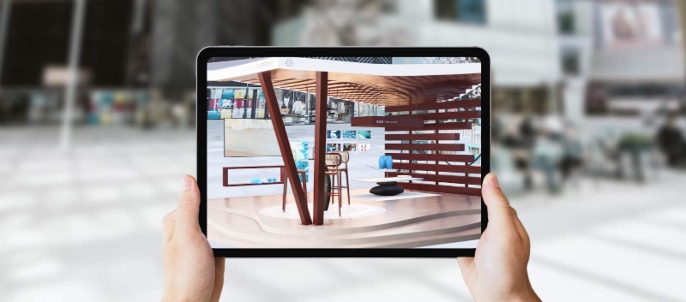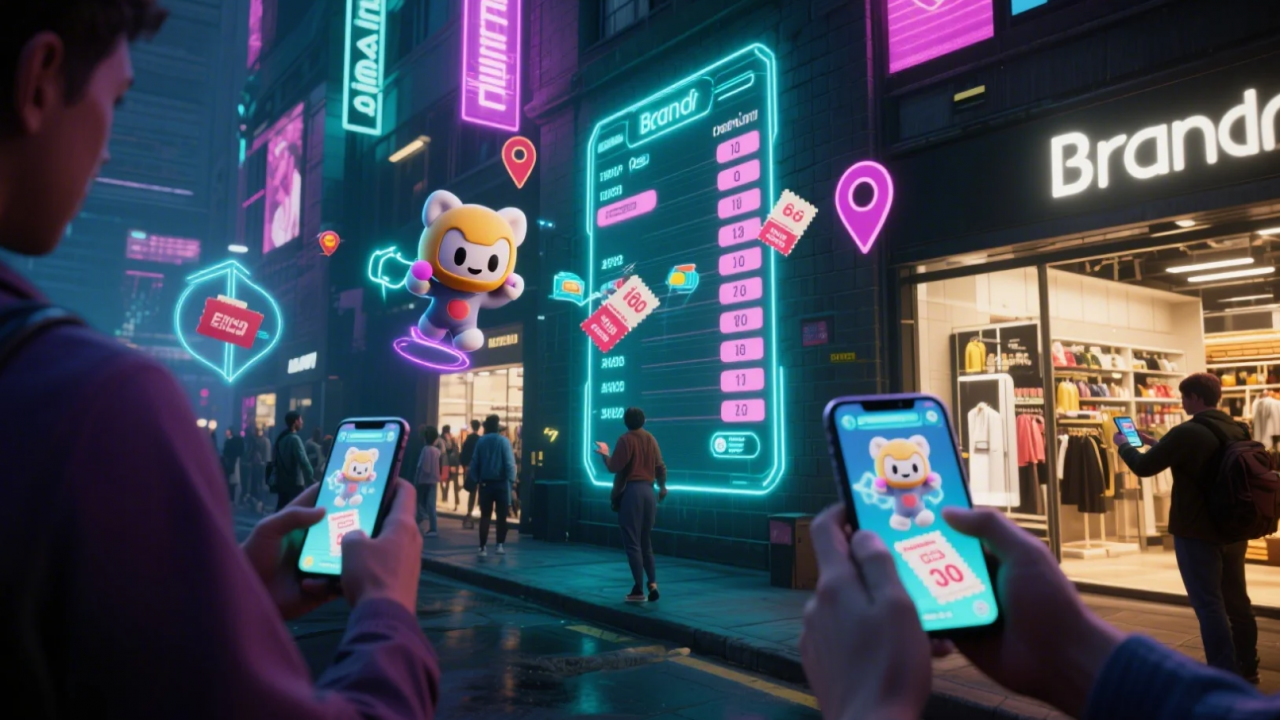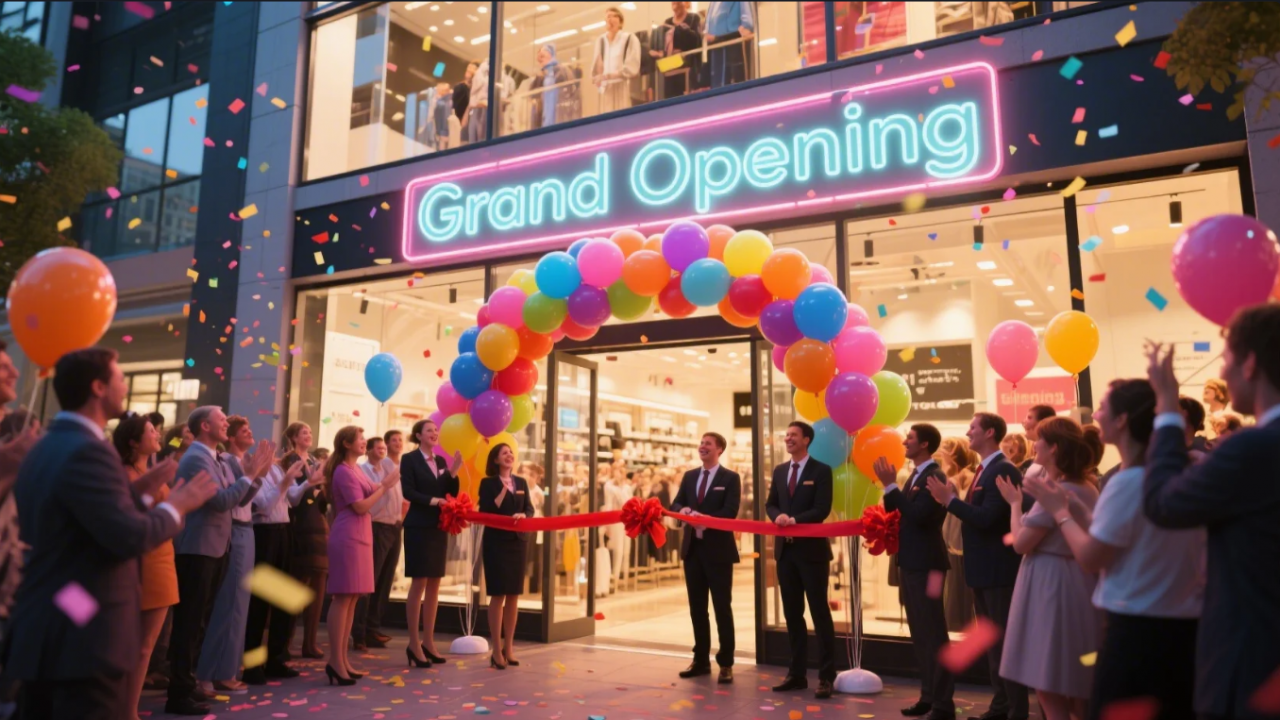Introduction
Augmented reality events refer to the overlay of digital content on physical events, which are viewed through AR devices such as AR glasses or smartphones. By combining virtual elements with real world scenarios, AR makes the events more interactive and engaging for participants or viewers, whether online or offline.
AR superimposes digital elements like images, videos, 3D graphics, or text on physical world in real time. This leads to the creation of interactive displays and digital kiosks on-site, offering an engaging and informative experience for potential leads. With 67% of users wishing to experience AR at events but only 48% of brands looking to provide that experience, there is a great opportunity to capitalize on. We just need to use this innovative technology in more effective ways to leverage its benefits fully.
Rising trend of AR in events and its popularity stats
Technology is advancing and customer expectations are increasing. Therefore, event organizers and marketers are quickly adopting AR technology to enhance user experiences and engagement. Both Millennials and Gen Z love experiential events where they can interact and engage with digital elements. According to latest studies, 60% of Millennials, 53% of Gen Z, 41% of Gen X, and 32% of Baby Boomers prefer events or attractions that include immersive experiences. This has led to the implementation of AR/VR technologies in events to make them more multi-sensory and memorable.
Top 8 Applications of AR in events to make them interactive
Corporate events
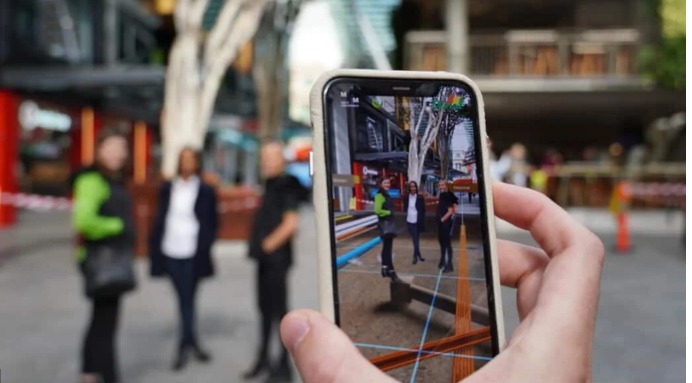
Source: inaugment
In corporate sector, AR can enhance events by providing interactive presentations and networking opportunities. Attendees can use AR apps to access additional content about speakers, products, or services. This not only enhances their engagement in the event but also connects participants with each other, leading to better collaboration and creative outcomes.
Product launches or demos
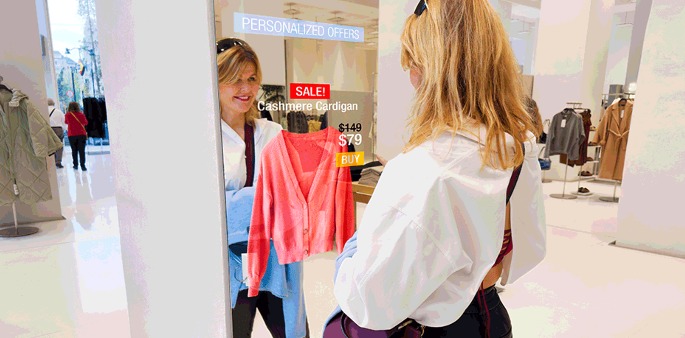
Source: fingent
Use of AR at product launches and demos helps marketers and brands showcase their products or services in a unique and innovative manner. This helps them show the value proposition of their product, so customers can get a real time preview of how the product works. A Global Report by Snap and Ipsos reveals that engaging with a product in AR results in a 94% higher conversion rate than traditional marketing approaches.
Trade shows and expos
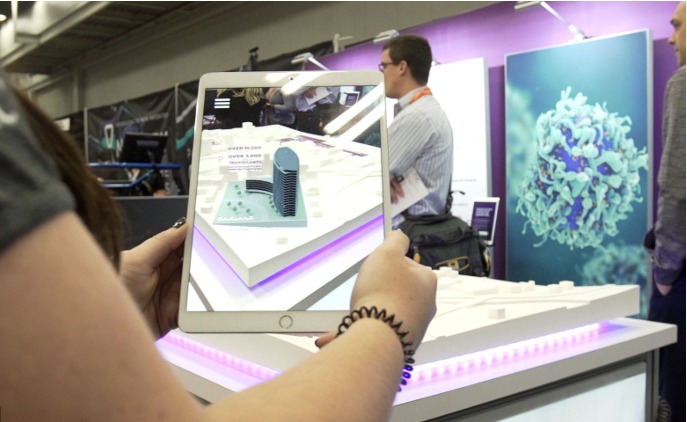
Source: smarttek.solutions
At tradeshows or expos, AR can help attendees navigate large venues and find exhibitors. Interactive AR-powered maps and booths can provide detailed information about products and services. This not only makes navigation easier but also saves time which can be spent on interacting with products, leading to more engagement and ROIs.
Live events
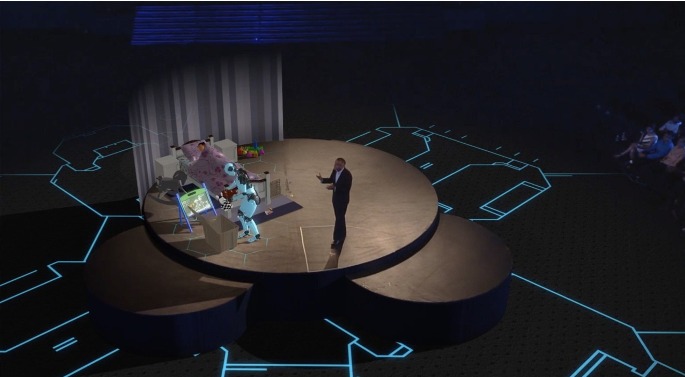
Source: linkedin
AR can make live events more engaging and fun by immersing participants in dynamic and interactive activities. Viewers can virtually attend and experience the thrill of live events through interactive AR displays. Live streaming events can use AR to enhance their streaming quality and user interaction through AI-driven analytics. This helps to provide personalized and thrilling live event experiences to viewers.
Concerts and festivals
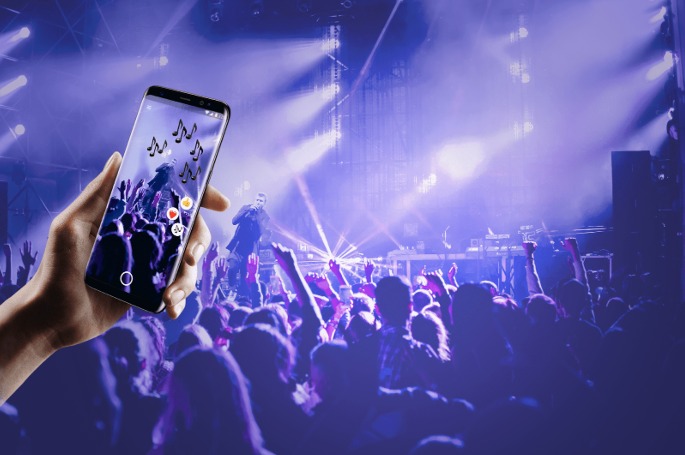
Source: softjourn
AR is used to enrich music festivals and concerts through immersive experiences. Organizers use AR to enhance real time performances of singers and performers. Viewers can also access exclusive content like behind-the-scenes and artist data and interviews through AR apps on their phones. This lets participants feel like they are part of the action.
Sporting events
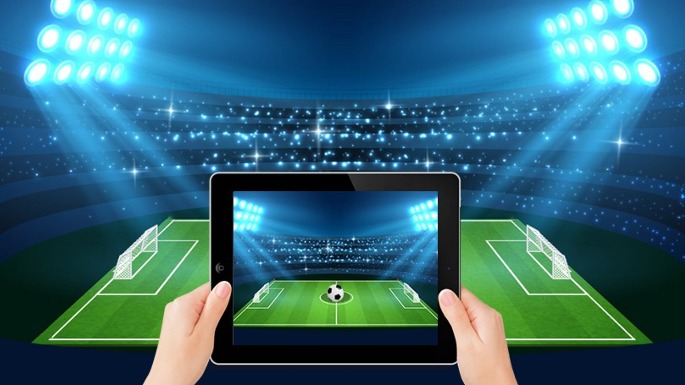
Source: quytech
AR can enhance fan experiences at sporting events by providing real-time statistics, player data, scores, and replays of key plays. Moreover, AR can also be used to create interactive content for fans and spectators such as virtual games and dynamic visuals superimposed on the ground field. These engaging experiences keep them hooked throughout the game.
Marketing events and promotions
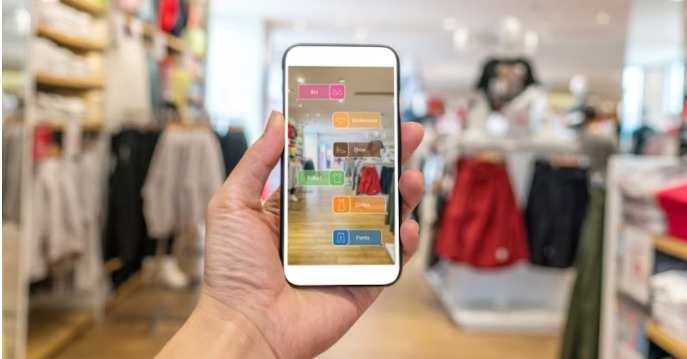
Source: gondola
Brands and E-commerce companies can use AR to level up their marketing and promotional events. Using AR, customers can interact with their desired products in real time. For example, they can virtually try on clothes, jewelry, shoes, make-up, and other accessories using AR technology. Moreover, brands can offer interactive activities, games, or branded experiences to make their event memorable.
Kivisense offers many feasible try-on solutions for various fashion brands in which users can virtually try on clothes, shoes, jewelry, and make-up items in real time. This innovative approach helps brands increase their engagement and boost sales effectively.
Interactive presentations
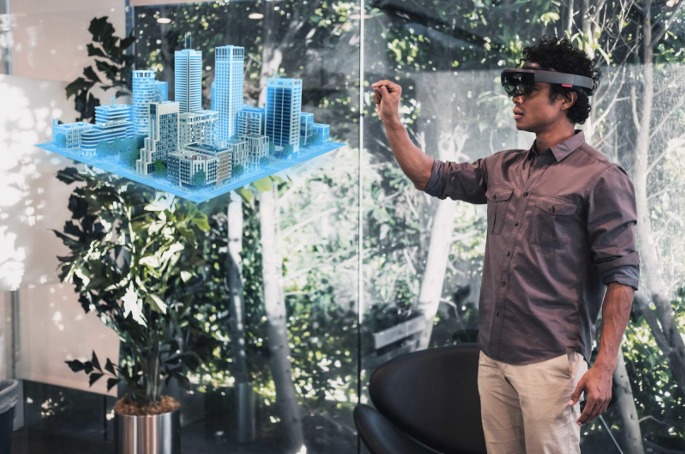
Source: afternow
AR can be used to enhance presentations by making them more engaging. Speakers can overlay graphics, 3D visuals, and animations in real time to make presentation more easier and understandable for attendees.
Benefits of using AR to enhance event experiences
User engagement and interactivity
Brands and E-commerce businesses can use AR to make their promotional events and campaigns more engaging. Interactive and dynamic visuals can attract more traffic for both online and offline retail. AR-powered gamification strategies and fun quizzes immerse participants in exciting experiences where they can interact with fun elements through realistic overlays.
Increased brand awareness and recall
When brands incorporate unique AR experiences in their marketing strategies and events, it leaves a lasting impression on customer’s minds. Something extraordinary is always memorable. So, people always remember innovative Metaverse experiences offered by any brand, leading to enhanced brand recall and visibility. This gives your brand an edge over other competitors and promotes effective storytelling.
AI-driven insights and analytics
Combining AI with AR helps to provide event participants with more personalized and engaging event experiences. AI tools can analyze user expressions and behavior patterns. These valuable insights can be used to offer tailored product suggestions and live experiences to attendees. This degree of involvement and immersion transcends all physical limits by seamlessly combining real and virtual worlds.
Cost efficiency and ROI
A study from Shopify indicates that using AR in the shopping process boosts sales conversions by 94%. AR integration lets viewers immerse in a never-seen-before experience. This leads to increased engagement, satisfaction, and higher returns on investment. In this way, AR integration proves to be an advanced but highly cost-efficient approach to making events more interactive and fun.
Real-life use cases of AR to make events more immersive
Watches and Wonders 2024
Watches and Wonders was an interactive AR-powered event created by Kivisense in Geneva. This event utilized innovative AI and AR technologies to create immersive experiences for world-famous watch brands like Chopard and Ulysse Nardin. This collaborative event was aimed to showcase the latest watch collections of luxury watch brands. The event lets visitors virtually try on their favorite watches and explore them in 3D before buying. It was a big hit and drove significant engagement and traffic to the brands.
CES (Consumer Electronics Show)
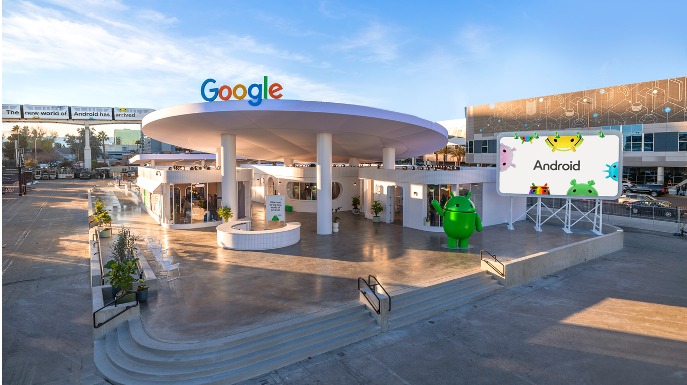
Source: blog.google
Google used AR to enhance its booth navigation experience at the 2024 Consumer Electronics Show in Las Vegas. The location-based content and AR features were quite engaging and helpful for visitors. Interactive panels around the booth made it easier for visitors to navigate and choose what to see. The famous Android robot also served as a friendly guide during the experience. Such immersive and personalized experiences increase fun and connect attendees in meaningful ways.
Mobile World Congress (MWC) 2024
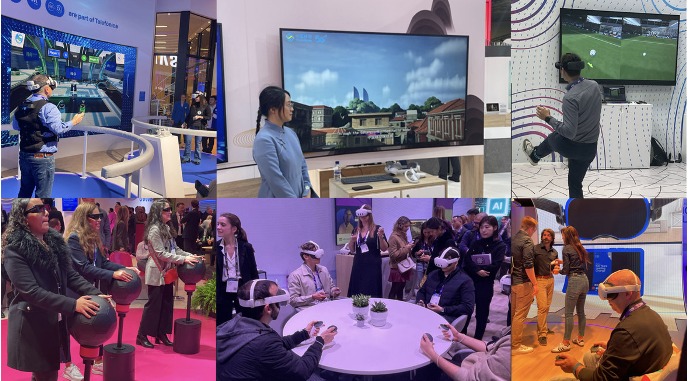
Source: worldline
MWC was the largest and most influential mobile event in the world. It showcased the latest innovations and technologies in the mobile ecosystem. Highlights of the event include valuable discussions and showcases related to 5G and beyond, Cloud and Edge Computing, Artificial Intelligence, Internet of Things (IoT), Security and Privacy, and Mobile for Good. The event featured innovative AR experiences, including AR glasses and holograms to show how AR integration can enhance user interaction with technology.
Paris Olympics 2024
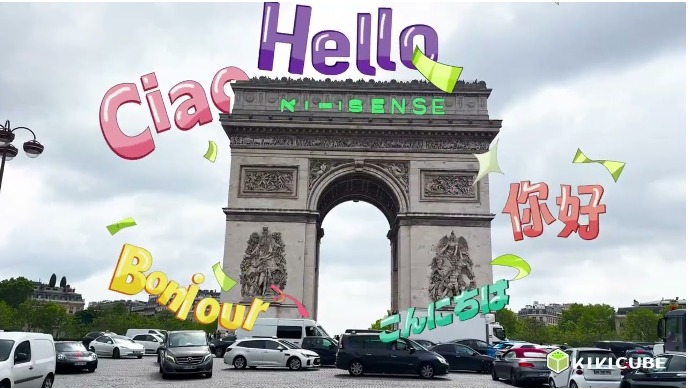
Paris Olympics 2024 was an event filled with countless interactive AR experiences. From Snapchat’s dynamic AR Olympic filters to the immersive exploration of the history of the 1924 Olympics through AR lenses, the event provided interactive experiences like never before. Kivisense created an exciting AR experience to project the Olympic rings at the famous Arc de Triomphe. This event was a global celebration to share good wishes from people around the world in a unique and innovative manner.
Future trends of AR in events and live festivals
Advancements in augmented reality are opening up more and better opportunities for event marketing and brand storytelling. The number of AR-compatible devices is expected to go up from 1 billion in 2023 to 1.5 billion by 2027 – a 50% jump in just four years. This fast-growing customer base will help AR to bring in more leads and boost spending at events in the next ten years.
Its integration with AI will bring a major shift in event marketing. AI generated avatars will make the experiences more personalized by providing direct and realistic interaction of customer with brands. Moreover, integration of AR with other immersive technologies like VR and MR will help event organizers unleash innovative Metaverse experiences like never before.
Conclusion
Augmented reality in events has completely changed how events are organized, executed, and experienced. Augmented event marketing helps organizers create real time enhancements in events to make user experience better. Adding dynamic, interactive, and gamification elements increases viewer engagement and conversion rates. It’s high time every e-commerce brand should integrate AR into its marketing strategy to make a unique mark. At Kivisense, we specialize in creating cutting-edge AR experiences for brands. Get in touch with us to start your immersive journey right away.

